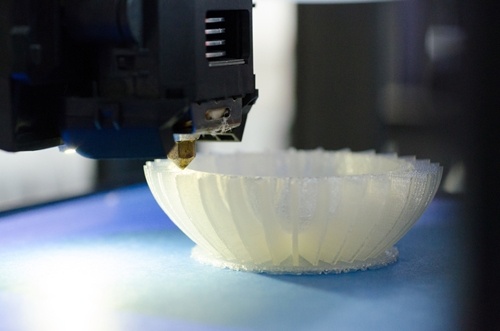
New ideas in manufacturing and warehouse management prioritize green practices for social and marketing reasons. Modern businesses and consumers want to know their decisions not only benefit themselves, but the larger world. When a trend like 3D printing – aka additive manufacturing – comes around, people try to recognize all of the possible benefits the innovation can provide.
The advantages and disadvantages of 3D printing may not be obvious to businesses at a glance, but companies should take a close look at how the process currently works to evaluate its possible effects on the environment and their organization’s bottom line.
Build From Scratch Rather Than Chip Away
In traditional manufacturing, organizations often take supplies and subtract what they don’t need to make the designs and shapes they do. In the additive process of 3D printing, the builder only uses the precise resources necessary for the creation of an item.
Fresh Business Thinking said resource preservation is one of the primary benefits of additive manufacturing. This advantage is great for companies that want to save money on costly materials, and it’s a boon for those looking to save natural resources.
Additive manufacturing does burn through a lot of energy, however. A company can leave a substantial carbon footprint by running 3D printing for long periods of time. As it stands now, the green benefits are dependent on what materials are saved through the innovative process.
Better, Lighter Products
With the right automated data collection, management and utilization strategies, a company can use 3D printing to mass manufacture very detailed products that function at peak performance. The Environmental Leader news source explained how an airplane manufacturer used 3D printer technology to design a cabin that was lighter than its previous models.
If vehicles are lighter, they take less fuel to run and operate. By using a process that can make more energy efficient, smarter products, a company can fill the market with green options.
Sharing Good Ideas
Operating in service of the global good can sometimes mean putting the needs of others ahead of the organization. Sometimes this requires a company to cut back on essential resources and find new solutions, other times it means losing its competitive edge by sharing its research and technology.
Many companies that come up with eco-friendly products or tools that lead to greener solutions share their innovations with relevant parties. Businesses can send specs for medical devices, water filters and recycling procedures to organizations with 3D printers in needy areas. A manufacturer just needs an automated data collection solution to capture the details of its ideas and share them where they can do good.
Reduce Transportation Harm
Additive manufacturing can eliminate steps in the supply chain. When assembling products from various parts – each possibly coming from a different supplier – a company requires the use of numerous transportation vehicles. If a business employs 3D printing technology, it can cut down on the number of trucks, vans and planes heading towards its warehouse.
This may be a minor advantage in the scheme of things, but any needless step eliminated from supply chain logistics management is an advantage for the modern business.
Only Print What You Need
One surprising disadvantage to 3D printing is that it may make manufacturing too easy, according to Fast Company. If an individual or organization finds a process that allows it to crank out products easily, it may not be so careful about making items that aren’t in demand.
When companies need to preserve resources, they work hard to reduce waste, which is also good for the earth. Even when manufacturing is simple, organizations need to maximize their profits and green practices by watching every step in production through automated data collection oversight.
Becoming More Innovative
Not everything about 3D printing is currently eco-friendly. Not only does the process use a lot of energy because it has to superheat materials like plastics and metal, but it also releases harmful vapors in the process.
Geek.com shared a few stories of innovators who found ways to additive manufacture with resources like paper. As the technology improves, it is bound to become greener if that is what consumers and businesses demand. In the near future, 3D printing could improve the business world and the environment.






